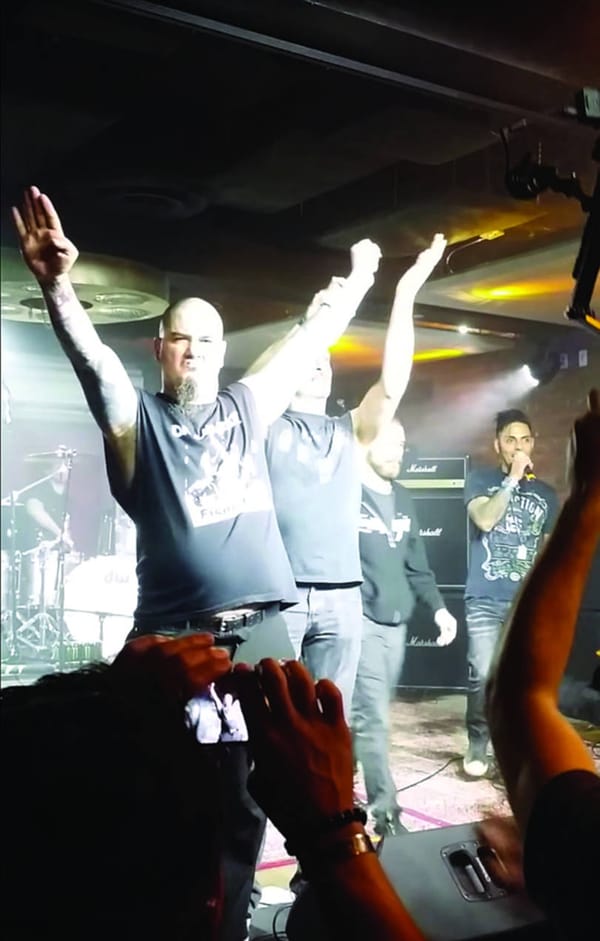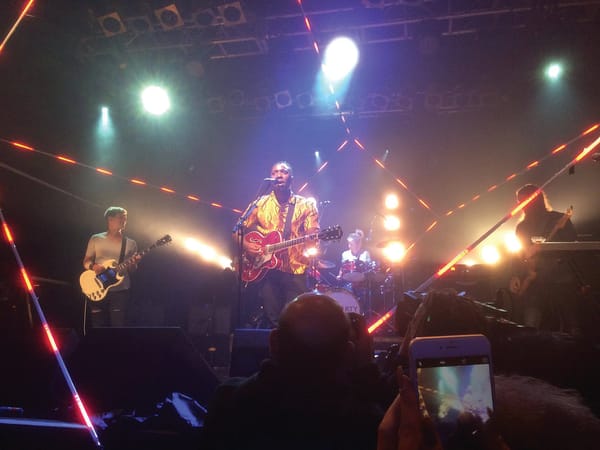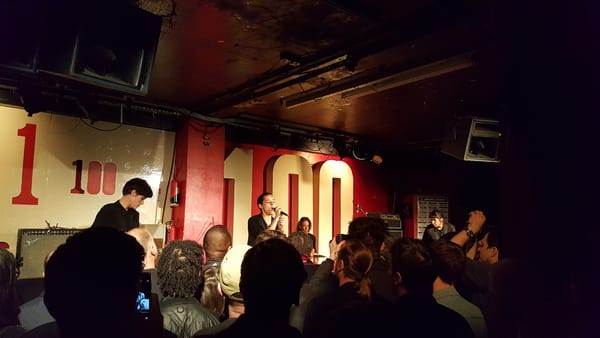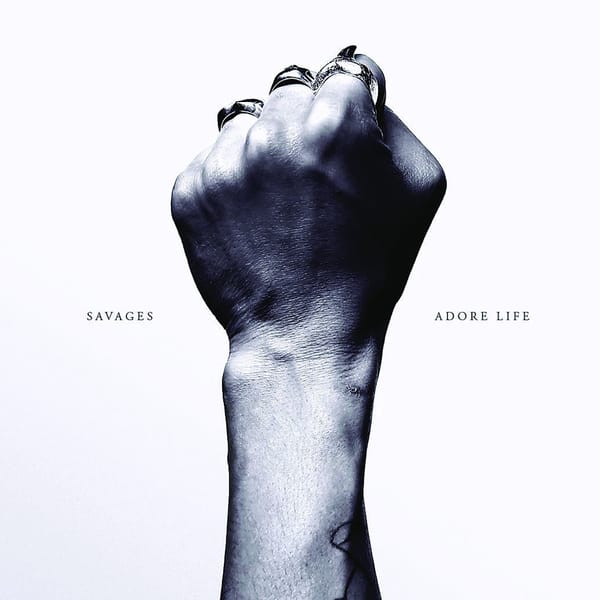Beyoncé wins the Super Bowl, again
Politically charged and gloriously celebratory
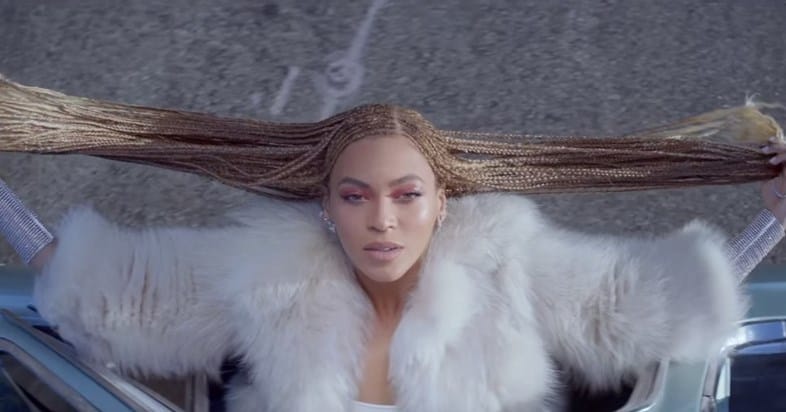
Beyoncé has never been one to shy away from making a statement; the surprise release of her self-titled album in 2013 proved that. The release of ‘Formation’ 24 hours before upstaging Coldplay at their headline gig at the Super Bowl could be a new high. Not only the manner of its release, but the message it sends, at once politically charged and gloriously celebratory, makes ‘Formation’ one of Beyoncé’s most powerful songs yet.
Released together with the video, the song is so reliant on the imagery to put forward its message, it seems impossible to discuss the song without referencing the video as well. Directed by Melina Matsoukas, who also directed ‘Pretty Hurts’ and Rihanna’s ‘We Found Love’, the video feels more art-house than those that usually accompany Beyoncé’s songs. An ad lib from the murdered Youtube star and bounce artist Messy Mya introduces a montage of post-Hurricane Katrina New Orleans; clapboard houses into floodwaters act as a visual shorthand for the chronic underinvestment by the government of black communities. Footage from Abteen Bagheri’s 2014 documentary That B.E.A.T. cuts to reveal Beyoncé, squatting on top of a sinking New Orleans police cruiser with raw buccaneer swagger.
Her voice when she starts to sing is hoarse, gravelly; closer to Nina Simone or Ella Fitzgerald than to the dance/pop Beyoncé from ‘Single Ladies’. This is pared down rap (no surprise that the track was co-written by Swae Lee of rap duo Rae Sremmurd) set to bounce music, a mix of hip hop and rap particular to New Orleans, which provides punctuation to Beyoncé’s unapologetic, punchy lyrics.
In its rap-adjacent, repetitive lyrical pattern ‘Formation’ has some stylistic themes common with ‘7/11’. However, whilst ‘7/11’ is a carefree dance anthem about youth and hedonism that as a result of its hotel setting is somewhat generic, ‘Formation’ is grounded in a particular experience, deeply entwined with the imagery of the black South.
‘Formation’ is far more radical and outspoken than we might’ve expected
The video weaves through the past and present, from the antebellum South to Southern gothic, from the churches that serve as the nucleus of the Southern communities, to take-away crayfish, Red Lobster, and hot sauce. This is a celebration and affirmation of identity from Beyoncé who has sometimes been accused of acting ‘too white’. “My daddy Alabama, momma Louisiana / mix that negro and the creole make a Texas bama” Beyoncé declares, rooting herself in her Southern ancestry, reclaiming racial slurs, reminding us that first and foremost she is a black, Southern artist. Perhaps she is reminding herself too: “earned all this money / but they’ll take the country from me”. It must be difficult to reconcile her present ‘Givenchy dress’ level wealth with her less affluent childhood, so it is particularly sweet when she declares “swag” to be a bottle of “hot sauce in [her] bag”.
This is about more than reclaiming a personal identity, it is also a reclamation of the narrative surrounding black Southern communities, and black women. It is joyous and celebratory in the face of discrimination, violence, and oppression. It tells us: don’t believe what you see on the TV, this isn’t gangland, these communities are more than acts of police brutality and grief. By inhabiting black women from the past, Beyoncé is holding up a picture of black ancestry that opposes the imagery that the mainstream media propagates, indicting a media that rewards showing black suffering (Twelve Years a Slave) but refuses to acknowledge the stories black communities write for themselves (Straight Outta Compton).
This is not about what other people think or want, this is a celebration of the beauty of black women by a black woman, about pride and self-love. Beyoncé sings about all the features that society tells black women they should find unattractive in themselves. “I love my negro nose with Jackson Five nostrils” she says, “I like my baby hair, baby hair and afro” she tells us, as we see her four year old daughter Blue Ivy playing, her afro bouncing. Later Beyoncé, her own hair in a big, blown-out afro joins a lineup of black women with afros to dance. There’s no mention of butts or curves or plump lips, the features that the white media fetishise in black women whilst condemning their noses and their kinky hair.
The power of black women coming together was underscored during Beyoncé’s half time performance at the Super Bowl. Wearing gold bandoliers, looking like a glam guerrilla leader crossed with Michael Jackson circa 1993, flanked by dozens of black female dancers, wearing black berets in homage to the radical Black Panthers Party, Beyoncé and the dancers joined together to give the ‘black power’ salute made famous by Olympic athletes Tommie Smith and John Carlos in 1968.
For many years now, she has had nothing left to prove
Throughout, ‘Formation’ is far more radical and outspoken than we might’ve expected, there is no question of looking at the subtext or reading between the lines. In a video filled with iconic images, one of the most striking is towards the end. A young black boy in a hoodie dances in front of a line up of (white) policemen in riot gear. He ends his moves by orchestrating the police to put up their hands in the ‘hands up don’t shoot’ gesture made famous in the Black Lives Matter protests. The scene cuts away to graffiti on a wall that reads “stop shooting us”.
Beyoncé, and husband Jay Z have been low profile but passionate supporters of the Black Lives Matter movement, with Jay Z donating $1.5 million in profits from his streaming website Tidal to Black Lives Matter and other similar organisations on the day that Trayvon Martin, another victim of police brutality would’ve turned 21. ‘Formation’ is Beyoncé’s acknowledgement that it is no longer enough to condemn quietly, nor support quietly; this is her finally, not exactly finding her voice on the issue, but raising it, and it is anything but quiet. In ‘Formation’, Beyoncé embodies the much maligned role of the angry black woman, and does so unapologetically, claims her black femaleness with pride, and says yes, I am angry, with good reason.
The “I slay” in ‘Formation’ could easily be substituted with Maya Angelou’s “I rise”; the track at times feels like ‘Still I Rise’ or Nina Simone’s ‘Young, Gifted and Black’ set to bounce music. Some will still be disappointed that Beyoncé waited so long. For many years now, she has had nothing left to prove, and having won every commercial and critical accolade possible (twice), nothing to lose. She has leant her voice to the feminist movement in particular, starting from ‘Independent Women’ with Destiny’s Child, all the way to ‘Flawless’ which used sections from Nigerian feminist writer Chimamanda Ngozi Adichie’s TED talk as a refrain. She has been less outspoken on racial matters however, sometimes in sharp contrast to other black female artists, perhaps most notably her younger sister Solange. ‘Formation’ in its call to arms to black women, however, acts as a brilliant example of what intersectional feminism should be. Trans women, and queer issues aren’t ignored either, the video uses footage from That B.E.A.T, a documentary on bounce music and queer culture in New Orleans, and features Big Freedia, a queer bounce artist. This inclusion and celebration of Southern culture cements Beyoncé’s reputation as an artist with something important to say, aside from being a phenomenal entertainer.
“I slay” sings Beyoncé repeatedly in ‘Formation’, and no one in good conscience can argue otherwise.

